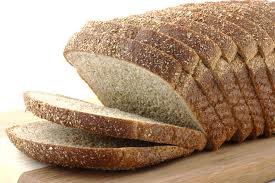Fooducate Blog - 4 Ground Rules for Choosing Healthy Bread [Bread miniseries part 1/4] |
| 4 Ground Rules for Choosing Healthy Bread [Bread miniseries part 1/4] Posted: 26 Jun 2012 05:51 AM PDT New here? Get Fooducated with our iPhone or Android App! Or try Fooducate on the Web! Bread is a staple of the western world, something many of us consume daily, if not several times a day. There is nothing quite like the scent of a freshly baked loaf. The pleasure of a warm slice of bread and a dab of butter is no doubt heaven for some. But buying bread in the supermarket is a different story. With hundreds of options, nutrition and ingredient lists that nobody understands, bread becomes a burdon. In this series of posts, we’ll try to help you learn how to make the best choices. What you need to know: You can make bread at home with just four ingredients: flour, water, yeast, and salt. If you do it right, the result is exquisite. Bakers who have mastered the proper technique produce batches of bread that are so delectable you want to eat them without adding anything. The problem: zero shelf life. These breads don’t last the night. They go hard in 24 hours, and within 72 start to grow mold. In French cities, there is an elegant solution – boulangeries (bakeries) are situated in almost every block , and denizen can walk down in their PJs early in the morning to pick up a fresh baguette or two for the day. The next morning, another fresh baguette. But in the US, where many families shop just once or twice a week and bread is made in far away factories, we need a long shelf life, as in weeks. In addition, the techniques used in small bakery batches don't work well for large scale bread manufacturing facilities. For these reasons, many additives are found in bread. They help raise the dough faster, improve the crumb (texture), and keep the bread nice and soft for a very long time. Perfect for a supermarket economy. From a nutrition perspective, a fresh loaf of bread is not necessarily a sound choice. In many cases, it is made with refined flour, lacking the nutrients and fiber of whole grain bread. So don’t confuse tasty fresh bread with healthier bread options. So how do you choose a bread that will be both tasty and healthy, with minimum additives? What to do at the supermarket: Here are our ground rules for choosing healthy bread:
In upcoming posts we will provide more specificity. Follow us on twitter: twitter.com/fooducate on facebook: facebook.com/fooducate |
| You are subscribed to email updates from To stop receiving these emails, you may unsubscribe now. | Email delivery powered by Google |
| Google Inc., 20 West Kinzie, Chicago IL USA 60610 | |



No comments:
Post a Comment